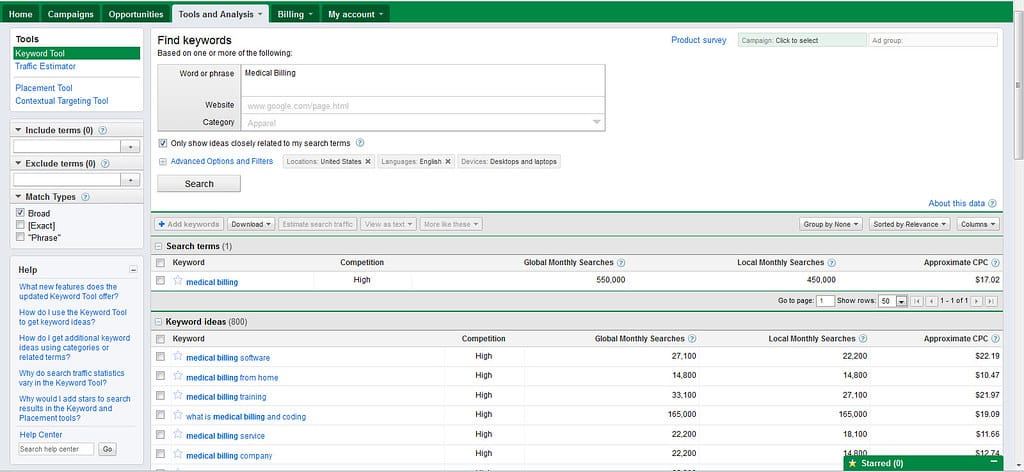so what are we talking about here
In our fast-paced online world, getting a handle on SEO (Search Engine Optimization) is more Significant than ever for anyone wanting to boost their visibility and grow their audience. It’s not just a trendy term; it’s a Indispensable strategy that can really help businesses and individuals connect with their desired audience. This complete SEO guide will take you through the key principles and tactics you need to know for enhancing your SEO skills in 2025.
SEO encompasses a variety of techniques aimed at improving both the quality and quantity of organic traffic to your website from search engines. By grasping these strategies, you can create content that not only appeals to your audience but is also optimized for search engines.
Throughout this guide, we’ll explore on-page SEO techniques, keyword optimization, and the significance of high-quality content. You’ll gain actionable insights and strategies that can help elevate your search engine rankings and attract more visitors. So, let’s jump into the fascinating world of SEO and set the stage for your success!
On-Page SEO Techniques
Optimize Title Tags and Meta Tags
Title tags are a key part of on-page SEO, as they inform both users and search engines about what your page is about. Since the title tag shows up in search engine results, it’s your chance to make a great first impression. It’s important to create a catchy and unique title for every page, ideally featuring your main keyword so users know what to expect.
When crafting title tags, aim for 50–60 characters to ensure they show up nicely in search results. For instance, if you’re writing about effective SEO strategies for 2025, a suitable title might be “Effective SEO Strategies for 2025: Boost Your Online Presence.”
Meta tags, especially the meta description, offer a brief summary of your page. While they don’t directly influence your search rankings, they can significantly impact your click-through rates. Write concise and engaging meta descriptions that include relevant keywords, keeping it around 150-160 characters. For example: “Discover essential SEO strategies for 2025 that will enhance your visibility and drive organic traffic. Learn how to optimize your content effectively!”
Utilizing Header Tags Effectively
Header tags (H1, H2, H3, etc.) serve multiple purposes in on-page SEO. They help organize your content and keep users engaged. The H1 tag usually represents the page title, and it’s best to include your primary target keyword here.
For example, if your page is focused on effective SEO strategies for 2025, your H1 tag could be “Mastering SEO Strategies for 2025: A Comprehensive Guide.” Using H2 tags to break down main sections helps create a clear content structure, with H3 tags for subsections. This layout not only enhances readability but also aids search engines in understanding your content’s organization.
Incorporating relevant keywords naturally in your headers can improve your chances of ranking higher in search results.
Keyword Optimization Best Practices

Keyword optimization is essential for attracting organic traffic to your site. Start with thorough keyword research using tools like Google Keyword Planner, Ahrefs, or SEMrush to find terms that resonate with what your audience is searching for.
Once you have your keywords, weave them naturally throughout your content in title tags, meta tags, header tags, and body text. Aim to use variations of your primary keyword to diversify your content while keeping it readable.
Avoid keyword stuffing, as too many keywords can lead to penalties from search engines. A good rule of thumb is to include your primary keyword at least once every 300 words, while also adding variations and related terms.
For example, write content exploring “SEO strategies” and sprinkle in terms like “keyword optimization,” “on-page SEO,” and “content relevance.” This approach improves your chances of ranking for primary keywords and enhances your content’s relevance to search queries.
Content Quality and Structure
Creating Relevant and Fresh Content
Quality content is at the heart of successful SEO strategies. Engaging and valuable content keeps users around longer, which signals to search engines that your content is worth seeing.
To create fresh content, think about the issues your target audience faces or the questions they’re asking. Address these pain points with solutions, insights, or detailed information. Gathering user feedback through surveys or comments can also spark ideas for new topics. Monitor trends with tools like Google Trends to see what subjects are gaining traction, and don’t forget to update existing content to keep it relevant.
In addition, breaking your content into digestible sections with clear headings can greatly improve user experience and engagement.
Content Structure for Enhanced User Engagement
A logical content structure is Indispensable for keeping users engaged. Use short paragraphs, bullet points, and lists to break up large blocks of text, making it easy for readers to skim through and find what matters without feeling overwhelmed.
Incorporating multimedia elements like images, videos, and infographics can also boost engagement. For instance, if you’re sharing best practices for user experience, a visually appealing infographic with tips can make the information more attractive and easier to digest.
Don’t forget to optimize your images for SEO with descriptive file names and alt tags. This not only enhances user experience but also boosts your visibility on search engines.
Image Optimization and Alt Text Usage

Images can enhance user experience when optimized correctly. Make sure they’re relevant to the content, providing additional context to the reader.
Optimize images for faster loading speeds because slow-loading images can drive users away. Tools are available to compress image sizes without losing quality, significantly improving your site’s speed.
Alt text is critical for both SEO and accessibility. It helps search engines understand the image’s context and is invaluable for users relying on screen readers. Use your primary keyword and a brief description in the alt text to maximize its effectiveness.
For example, if you include an image about your SEO topic, your alt text might be “SEO strategies for 2025 – optimizing content for improved search rankings,” which accurately describes the image while incorporating a keyword.
Technical SEO Essentials
Site Speed and Mobile Optimization
Site speed is now a Significant ranking factor, as slow websites can frustrate users and lead to high bounce rates. Research shows that even a one-second delay in loading time can seriously hurt conversions.
To improve site speed, consider:
- Optimizing Images: Compress images as previously mentioned.
- Minimizing HTTP Requests: Limit the elements (JavaScript, CSS, and images) loaded on each page.
- Enabling Browser Caching: This allows browsers to save certain elements, speeding up load times for repeat visitors.
- Using a Content Delivery Network (CDN): CDNs can distribute your website’s resources across various servers, reducing latency for users everywhere.
Mobile optimization is just as essential. Given that more people are accessing the internet via mobile devices, having a responsive design is imperative. A mobile-friendly site not only enriches user experience but also positively impacts your search rankings.
Website Architecture and Crawlability
A well-structured website enhances good SEO. It makes it easier for search engines to crawl and index your pages effectively, which in turn boosts your search rankings. Organize your content logically, starting with main topics or categories before moving into subcategories and specific articles.
Creating a clear URL structure aids navigation. Short, descriptive URLs that incorporate relevant keywords are preferable. For example, “www.yoursite.com/seo-strategies-2025” is clearer than “www.yoursite.com/page12345.”
Implementing a sitemap is also a smart move. A sitemap outlines your website structure, improving crawlability. Don’t forget to submit your sitemap to Google Search Console to ensure all your pages get indexed.
Implementing Schema Markup for Better SERPs
Schema markup is an advanced technique that helps search engines interpret your content by providing structured data. Implementing this can enhance the snippets shown on search engine results pages (SERPs), potentially increasing click-through rates.
For example, using schema markup for articles can display additional details like ratings, author info, and publication dates, making your listing on the SERP more informative and appealing.
You can use Google’s Structured Data Markup Helper to implement schema markup. Once added, validate it with Google’s Structured Data Testing Tool to ensure everything is correct. Although there’s a bit of a learning curve, this technique can greatly boost your site’s visibility and attract more clicks.
Link Building and Backlink Strategies
Importance of Backlinks for Search Rankings
Backlinks are a fundamental part of SEO, acting as votes of confidence from one site to another. When reputable websites link to your content, it signals to search engines that your site is authoritative and trustworthy.
Focus on acquiring high-quality backlinks from well-respected sites in your niche. Guest blogging, creating shareable infographics, and collaborating with industry influencers for social media outreach can be great ways to earn valuable backlinks. Remember, quality trumps quantity—a single link from a trusted site holds more value than multiple links from lesser-known sources.
Strategies for Effective Internal Linking
Don’t overlook internal linking, as it’s essential for SEO. It helps distribute page authority throughout your site and guides users to other relevant content. Internal links also enhance navigation for search engines.
When writing content, look for opportunities to link to other articles or pages on your site. Use descriptive anchor text to give context about the linked content.
For example, if you write about the benefits of SEO for small businesses, consider linking to another piece that discusses specific SEO strategies tailored to them. This encourages readers to explore your site further, boosting content relevance.
User Experience and Engagement
Enhancing User Experience Through Responsive Design
User experience matters greatly for SEO. A well-designed site captivates users, keeping them on your page longer and improving your chances of ranking higher. Make sure your website is easy to navigate and visually appealing.
In addition to responsive design for mobile users, consider elements like load times, layout, and intuitive navigation menus. A user-friendly interface helps visitors find what they need quickly and efficiently.
Regularly gather feedback about user experience. Tools like Google Analytics can offer insights into user behavior, helping you identify barriers that may prevent full engagement with your content.
Utilizing Social Signals for Better Engagement
Social signals—reflecting user engagement on social media—can indirectly affect your SEO performance. While there’s still some debate about the direct impact of social signals on rankings, strong engagement can drive traffic, boost brand awareness, and enhance your site’s credibility.
Encourage audience sharing by integrating social sharing buttons on your blog posts. Maintain an active presence on social media by consistently posting relevant and engaging content to connect with your community. Respond to comments and questions quickly to build a loyal following and foster more interaction.
Analytics and Performance Monitoring
Using Analytics to Track SEO Performance
Utilizing tools like Google Analytics is Significant for understanding your website’s performance. Track key metrics to evaluate how effective your SEO efforts really are.
Look at data like organic traffic, page views, bounce rates, and session durations. Identifying which pages excel and which ones need a little help will enable you to make informed decisions that enhance your SEO strategies over time.
Set up goals in Google Analytics to measure specific actions, like newsletter sign-ups or purchases. This helps you understand how efficiently your site converts traffic into leads or sales.
Evaluating Organic Traffic and User Behavior
Understanding trends in organic traffic and user behavior is essential for refining your content strategy. Leap into where your traffic comes from and which keywords are attracting the most visitors.
Examine metrics like average session duration and bounce rates to gauge user interactions with your content. A high bounce rate might indicate that visitors aren’t finding what they expect, prompting you to tweak headlines, descriptions, or content.
Understanding conversion pathways—the steps users take before completing a goal—is also Significant. Analyzing this information helps identify potential barriers in the user journey that could be preventing conversions.
Video SEO and Future Trends
Importance of Video SEO in 2025
As video content continues to surge in popularity, video SEO has become an essential aspect of comprehensive SEO strategies. Optimizing your video content enhances visibility on search engines and drives traffic to your site.
To optimize videos, consider the following:
- Include Relevant Keywords: Use keywords in titles, descriptions, and tags for better discoverability.
- Create Engaging Thumbnails: Attractive thumbnails can encourage clicks, helping your videos perform better.
- Embed Videos in Blog Posts: Pairing written content with relevant videos increases engagement and time spent on your site.
Hosting webinars, tutorials, or live Q&A sessions can also establish your authority in your niche while creating a deeper connection with your audience.
Emerging Trends in SEO Strategies
As technology advances, so do SEO strategies. Staying updated on new trends is essential for adapting your approach effectively to maintain or enhance your search rankings.
- Voice Search Optimization: With the rise of voice-activated assistants, optimizing for voice search is Indispensable. Focus on long-tail keywords, conversational phrases, and local SEO to engage voice search users.
- Artificial Intelligence: Search engines like Google employ AI algorithms to analyze content more effectively. Keeping an eye on advancements in AI is important, as they may influence content ranking.
- User Intent: Understanding the reasoning behind a user’s search query will become increasingly important. Create content that addresses various intents, whether informational, transactional, or navigational.
- Local SEO: More users are searching from mobile devices, making local SEO more Significant. Optimize for local keywords and ensure your business is correctly listed in directories and on Google My Business.
- Content Experience: User experience goes beyond just functionality; it includes how users feel when interacting with your content. Aim for a seamless experience by making your content visually appealing, informative, and easy to navigate.
By staying informed about these trends, you can adjust your SEO strategies proactively, positioning your website for success as algorithms and user behaviors evolve.
Conclusion
To sum it all up, mastering SEO in 2025 means understanding and implementing a range of strategies. From optimizing title and meta tags to creating a stellar user experience, each element plays a significant role in boosting your search rankings and drawing organic traffic.
By sticking to on-page SEO best practices, producing high-quality content, and continuously refining your strategies based on analytics, you can build a solid SEO foundation that evolves with future trends.
With this new knowledge and toolkit, it’s time to get to work. Start optimizing your website today, enhance your visibility, and nurture user engagement to create a flourishing online presence. Remember, the journey to mastering SEO is ongoing—stay flexible and proactive as you navigate this ever-changing Tech-based Horizon.
Final Thoughts
As you Start on your SEO journey, keep in mind that consistency is Significant. Regularly monitor your performance, stay updated on industry trends, and adapt your strategies when necessary. Your dedication to SEO will yield long-term success, Finally boosting your visibility and connecting you more effectively with your audience.
Investing time in learning and applying SEO techniques can set your brand apart in a crowded online marketplace. Whether you’re running a business, creating content, or engaging in Tech-based marketing, implementing effective SEO strategies can significantly elevate your chances of success.







